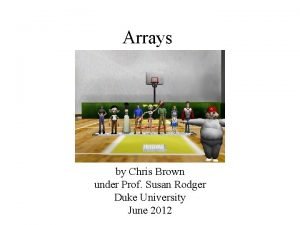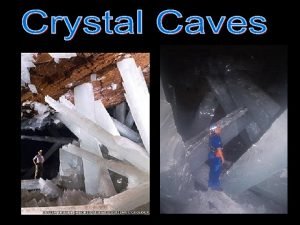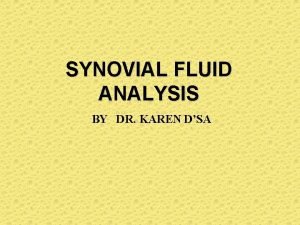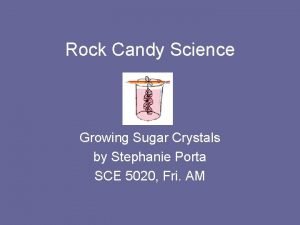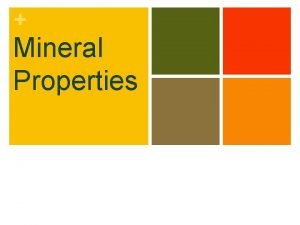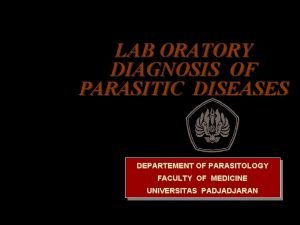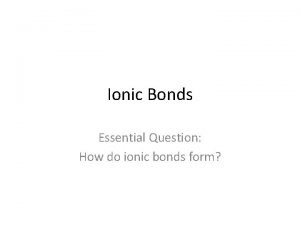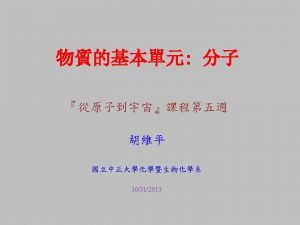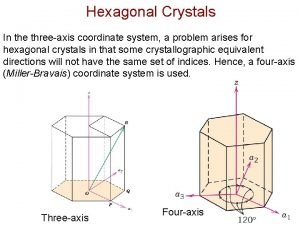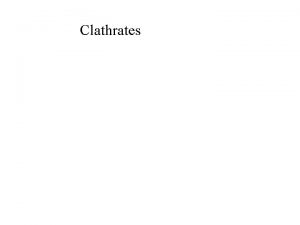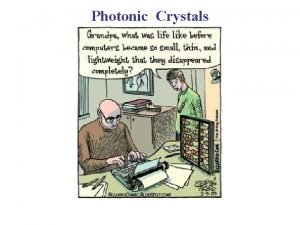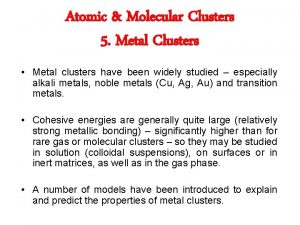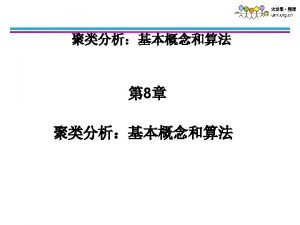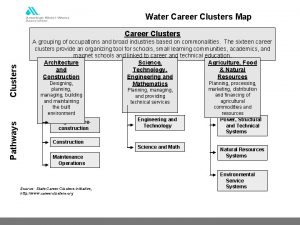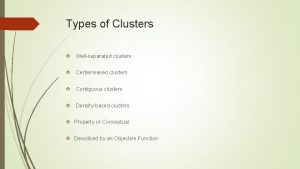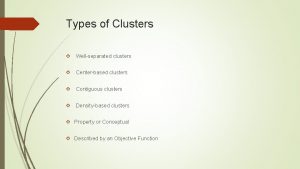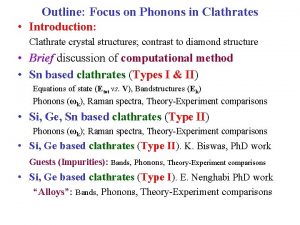Clathrates Clusters and Crystals P M Rodger Department










- Slides: 10

Clathrates, Clusters and Crystals P. M. Rodger Department of Chemsitry

Crystal Modifiers • Growth & Morphology Control ¯ Biomineralisation: complete control of morphology, polymorph & size (e. g. using polysaccharides) • Inhibition of crystallisation ¯ Suppression of nucleation ¯ Reduction in growth rate ¯ Polycrystalline suspension

Molecular Sculpturing • Form and kinetics depends on ¯Subtle changes in molecular composition ¯Subtle changes in already dilute concentrations • Need to understand mechanism in molecular detail to know how to formulate coarsegraining hierarchy

Waxes • Polycrystalline soft solids ¯ Lamellar structure found in nalkanes persists in waxes ¯ Growth rates controlled by (110) and (010) surfaces ¯ Growth is defect-driven • Low dosage inhibitors ¯ Typically comb-like polymers ¯ Activity relates to surface adsorption ¯ wide range of effects Ä– many small crystals in suspension Ä– suppression of initial formation Ä–soft, easily removed deposits (010) (100) Top view of the (001) surface; cleavage planes for other surfaces are shown by the arrows

Experimental result • R. Kern and R. Dassonville J. Cryst. Growth 116 (1992) 191 • Crystallized C 26 and C 36 from heptane solution with varying concentrations of polyalkylacrylate • High degree of polymerization Additive Concentration (ppm) 0 1 4 acted as growth promoter • Low polymerization (m<9) acted 5 as growth inhibitors • Found solid solution for C 26 and phase separation for C 36. • Notable reduction in crystal size 100

Wax Inhibitors: Strategy • Simulate in series of steps of increasing complexity: ¯ wax growth in vacuum ¯ wax growth with inhibitor and oil • Identify key factors that determine activity • Develop coarse-grained simulations to encompass these factors

Wax Inhibitors: key factors (001) Favoured for dimer, but strained in octamer • Match to surface is affected by size of polymer ¯ Inhibitor targets growth surface only for octamer or larger (110) Surface favoured for oligomers • Subsequent growth is incommensurate with wax Four alkane layers grown on an inhibited (110) surface ¯ Shear defects remove lamelar structure

Model for inhibited wax crystal growth Top View Wax Side View Wax Inhibitor

MC for crystal growth • Gilmer and Bennema (1972) ¯transition probabilities for addition P+ and subtraction P¯P+ =n exp(Dm/k. T) P-=n exp[(2 -i)2 f/k. T] ; i=0, 1, 2, 3, 4 ¯ 2 f is the bond strength between 2 growth units - n material-related frequency; i is number of neighbours

MC for growth inhibition • van Enckevort and van der Berg (1998) ¯arrays of immobile impurities ¯no addition or subtraction at impurity sites ¯No “bonds” to adjacent growth units • Modification for anisotropic crystal ¯P- = n exp[((1 -ix)2 fx+(1 -iy)2 fy)/k. T] ; ix, iy = 0, 1, 2 ¯fx and fy are “bond” strengths in x and y directions ¯Parameterise from MD of solvated islands


